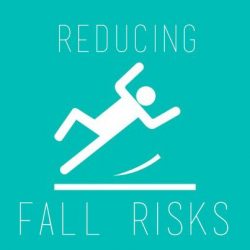 Falls can lead to significant injury, disability and even death in older adults, in fact falls are the leading cause of deaths from injury for people aged 65 and over. On average, one in three people aged 65 and over will fall at least once per year. Rates of falls are higher among older women than older men and continue to increase with age.
Falls can lead to significant injury, disability and even death in older adults, in fact falls are the leading cause of deaths from injury for people aged 65 and over. On average, one in three people aged 65 and over will fall at least once per year. Rates of falls are higher among older women than older men and continue to increase with age.
Falls threaten the health and wellbeing of older people; once they have had a fall their confidence can be seriously affected and they may develop a fear of falling. Fear of falling can lead to avoidance of physical activity and other activities they normally do, like walking to the local shops. A negative cycle can then develop where an older adult may become less active, causing them to become physically weaker, putting them at higher risk of falls and reducing their quality of life and independence.
Falling is NOT an inevitable part of ageing and many falls can be prevented. We often think that falls are simply caused by things that make us slip or trip, like a loose mat or uneven step, but one of the biggest risk factors is a lack of strength, balance and agility due to lack of physical activity.
One very important measure we can take to prevent falls is to build muscle strength and increase balance through regular exercise. We need good strength, joint range of motion and balance to support our body weight when performing daily activities like
- Walking
- Getting dressed
- Going up and down stairs
- Getting out of bed
- Getting in and out of the car
- Getting groceries off the shelf
There are lots of different exercises we can do to help increase muscle strength, joint stability, core strength, balance and flexibility. Even starting with very basic, body weight movements and range-of-motion exercise can help. For exercise to be effective it needs to be progressive, it may start off gentle, but needs to go onto higher levels to be effective in preventing falls.
Incidental activity that we accumulate throughout the day as part of our daily routine will also help in maintaining functional fitness, for example, using the stairs, walking to the bus stop and walking around the house. Increasing incidental physical activity can help increase overall physical activity and produce improved health outcomes.
Once a base level of fitness has been built up an older adult can start working on more advance movements and exercises to keep building towards better health outcomes!
The following exercises are some suggestions of simple exercises that can be done at home and can be a great starting point to get moving.
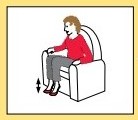 |
Seated calf raises and toes raises – sitting in a comfortable chair, place your toes on the floor and push down through the toes lifting the heels. This can be repeated pushing down the heels and lifting the toes |
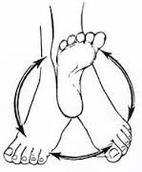 |
Seated ankle circles – sitting down, lift one leg at a time and roll your ankle in both a clockwise and anti-clockwise direction |
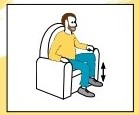 |
Seated knee lifts and leg lifts – sit back in your chair, lift one knee up towards your chest and hold for a few seconds before lowering. This can be repeated with a straight leg |
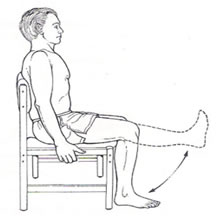 |
Seated leg extensions – seated back in your chair, lift one knee up and extend your leg, then bend it back down again |
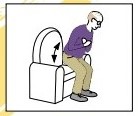 |
Chair sit down stand up – sit down in a chair with feet flat on the ground, stand up and sit down, try not to use your hands |
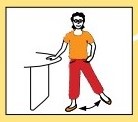 |
Standing leg lifts – stand up and hold onto a sturdy chair, table or bench. Squeeze your glutes and lift one leg out behind you, this can be repeated to the front and to the side |
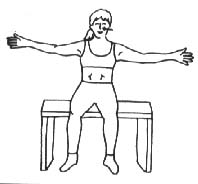 |
Arm raises – Sitting or standing in a comfortable location, lift arms out to the front then down, repeat to the side, and then to the back |
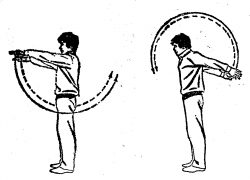 |
Arm circles – Sitting or standing in an open space, use arms and shoulders to make big circles in the air both forwards and backwards |
